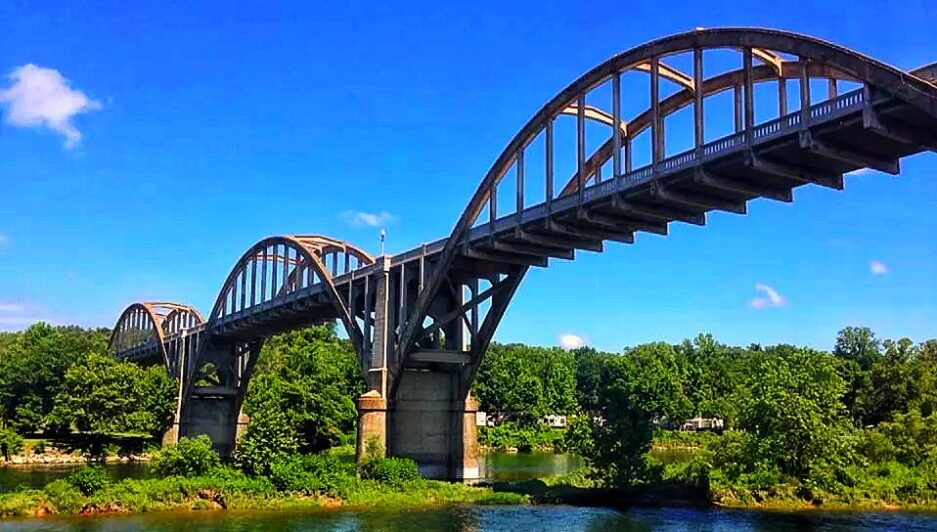I’ve begun to map out my bicycle rides a little more carefully.
Oh, I remember how I used to laugh at my riding friends who would explain how that highway has too many patches, or there are a few too many hills to follow this road.
Wimps! Why do you ride if you’re afraid? What’s a little hill to a rider? Who’s concerned about a bump or two?
Odd. I’m still not much worried about the bumps or the hills. No. I can dodge potholes with the best of them. And, I’m learning how to trim the gears on the forty-year-old ten-speed well enough to climb most of the hills I encounter along the way. Most of them.
So why would I be careful about planning my rides? You’ll laugh.
I hate hand signals.
It’s the lane changes and turns that get me now. Turning left? Left arm straight out, fingers together, warning approaching traffic (both front and rear) that the lightweight bicycle is about to brave the crossing of a lane or two of oncoming cars. Right turn? No, not the right arm, but again the left—this time straight out from the shoulder with a right angle at the elbow aiming upwards, still with the fingers together, pointing to the sky.
I hear the laughter already. What could be hard about that?
If you had seen the number of people who wave back at my right-hand turn signal, thinking I’m just being friendly, you’d laugh even more. But the icing on the cake—the epitome of turn-signal blunders—was a left turn I made recently across a busy four-lane highway which has a turn lane in the center.
I rode north about half a mile along the heavily traveled state highway, staying as close to the right hand side of the shoulder as possible. Carefully, glancing over my left shoulder repeatedly as I neared the intersection at which I was turning to the west, I stuck my left arm straight out and crossed both lanes of northbound traffic. Riding on in the center lane to my turning point, I kept my arm out at the ninety-degree angle to my body to warn the oncoming traffic of my intentions. It worked beyond my wildest dreams.
I was twenty feet away from the corner when I realized the next car coming toward me was a sheriff’s deputy. He saw my arm stuck straight out and stood on his brakes, stopping short in the southbound lane, turning on the blue flashing lights in the light bar atop his vehicle.
He thought I was waving him down!
The traffic behind him, as well as the cars coming up behind me, all stopped as I flew across the lanes and around the corner. How embarrassing! When the officer saw I was merely turning, he sheepishly turned off the lights and went on his way.
I didn’t look back either, but pedaled on down the little country road as fast as my tired legs could spin the wheels.
I am realizing something as I grow older. I don’t enjoy changing directions. For one thing, I have to take a hand off the handlebars, a decidedly tricky feat for me as my balance erodes and confidence fades.
I must also turn off the road on which I’m riding, usually a familiar route. I like familiar routes, roads mostly chosen for ease of travel and lack of traffic.
Who knows what lies around the corner?
Often a new route leads steeply uphill—then again, sometimes just as steeply downhill, reminding me that another hill to climb will be in my path on the road back home. Just when I’ll be tired and running out of enthusiasm.
 Around curves, dodging stray dogs and potholes, the thought of unfamiliar terrain overwhelms and yes, sometimes frightens.
Around curves, dodging stray dogs and potholes, the thought of unfamiliar terrain overwhelms and yes, sometimes frightens.
I don’t like transitions.
Besides how poorly I execute the maneuvers, I abhor the unknown.
During this last week, I’ve been approaching one of those turns. As it does eventually, life has progressed to the point at which I’ve lost the first member of my nuclear family. Things are going to change. Again.
The status quo, the reality I have lived with for nearly sixty years, has come to an end, and my arm is out—signalling a change in direction. I don’t want to make this turn.
We all, without exception, face these transitions. Some are more adept at making the turn—even better at signalling their intention. No one will mistake their turn signal for a plea for help.
Change is coming. But then, it always has done that. The difference is that there will be no turning around from these changes.
Realization hits and I see clearly that I actually don’t want to turn around. This is not some bicycle ride—out a few miles and then back home.
No. I’m headed on the home lap right now.
Home is out there ahead of me.
Around one of those corners.
I’ve been signaling this turn long enough.
Time to move on through the intersection.
I can’t get home just sitting here.
Hear my prayer, O Lord! Listen to my cries for help! Don’t ignore my tears. For I am your guest—a traveler passing through, as my ancestors were before me.
(Psalm 39:12 ~NLT)
This world is not my home, I’m just a’passin’ through.
My treasures are laid up somewhere beyond the blue.
The angels beckon me from heaven’s open door,
And I can’t feel at home in this world anymore.
(Albert Brumley ~ American songwriter ~ 1905-1977)
© Paul Phillips. He’s Taken Leave. 2015. All Rights Reserved.
